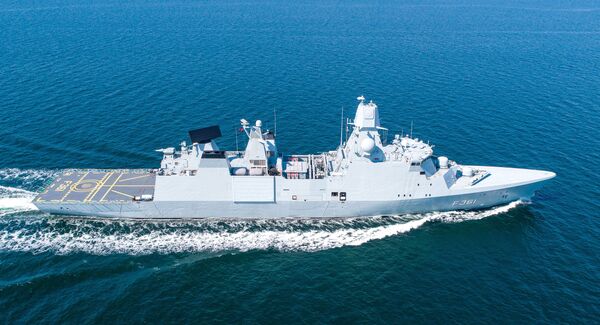
The Royal Danish Navy (RDN) frigate HDMS Iver Huitfeldt (pictured in October 2021) has returned to Korsør from deployment in the Red Sea. (Michael Nitz)
The Royal Danish Navy (RDN) frigate HDMS Iver Huitfeldt (F 361) returned to Naval Station Korsør, Denmark, on 4 April following its deployment in the US-led multinational task force Operation ‘Prosperity Guardian', Danish Defence Command has confirmed.
The frigate's return was originally scheduled for mid-April and comes amid controversy over the performance of the frigate's combat systems during the deployment.
Iver Huitfeldt sailed from Korsør on 29 January and transited the Suez Canal on 8 February, the Danish Ministry of Defence (MoD) confirmed. During the deployment, Iver Huitfeldt had a self-defence and extended self-defence mandate, according to the MoD, which meant that the frigate and its crew could use force to protect themselves and nearby ships from attacks by Yemeni rebel group Ansar Allah (commonly known as the Houthis) but could not participate in US-led offensive operations against the Houthis.
This mandate was put into action on 9 March, when the frigate engaged and destroyed four Houthi unmanned aerial vehicles (UAVs) in the Red Sea. The UAVs were part of an attack by about 15 UAVs in the southern Red Sea, Danish Defence Command said on 9 March. Iver Huitfeldt's commanding officer, Kommandørkaptajn Sune Lund, said, “At a little after 0400 [h] local time, we recognised a drone which was heading towards Iver Huitfeldt and the surrounding ships. After making sure it was an enemy, we engaged and defeated it. Over the next hour, this happened three more times.”
Looking to read the full article?
Gain unlimited access to Janes news and more...







